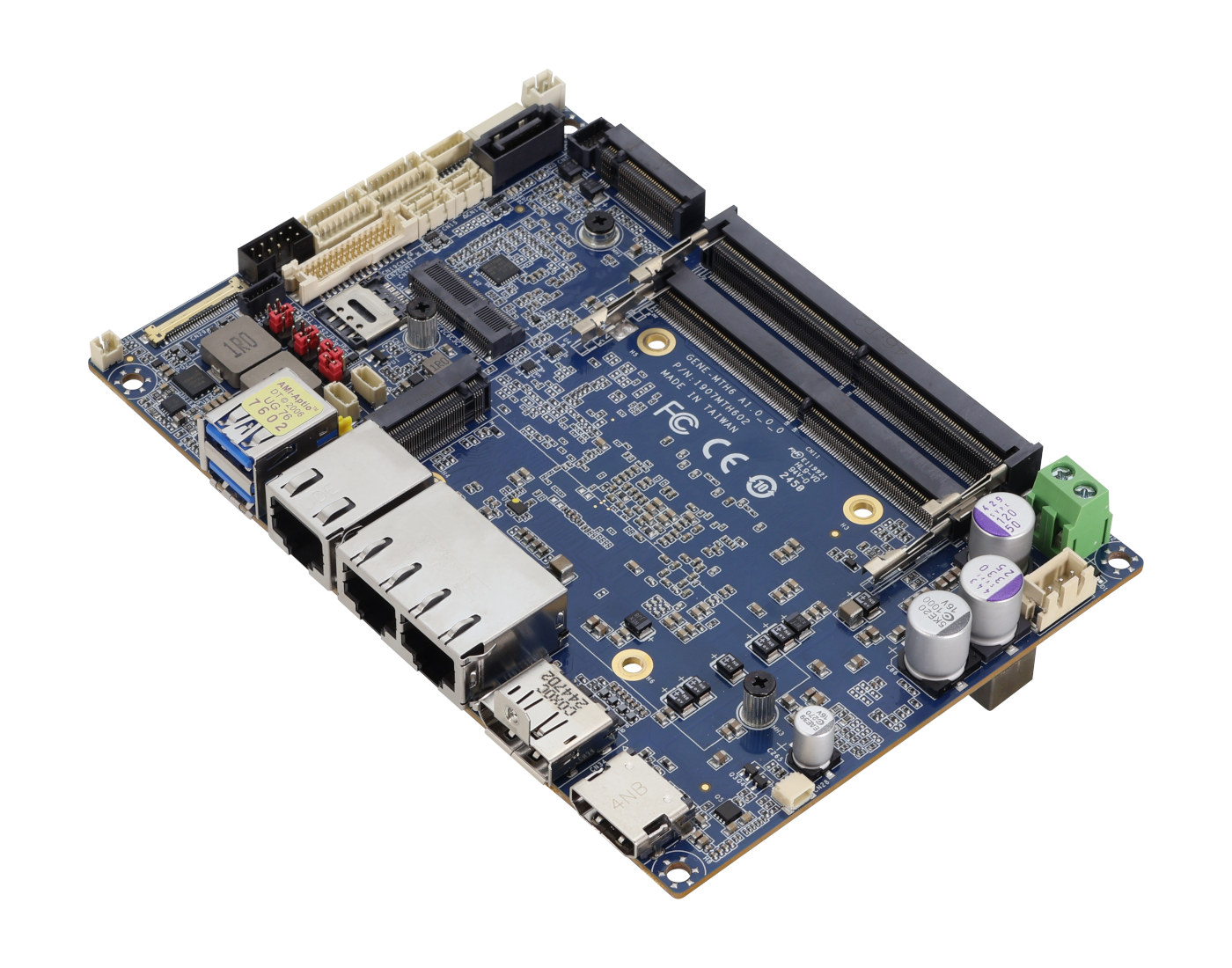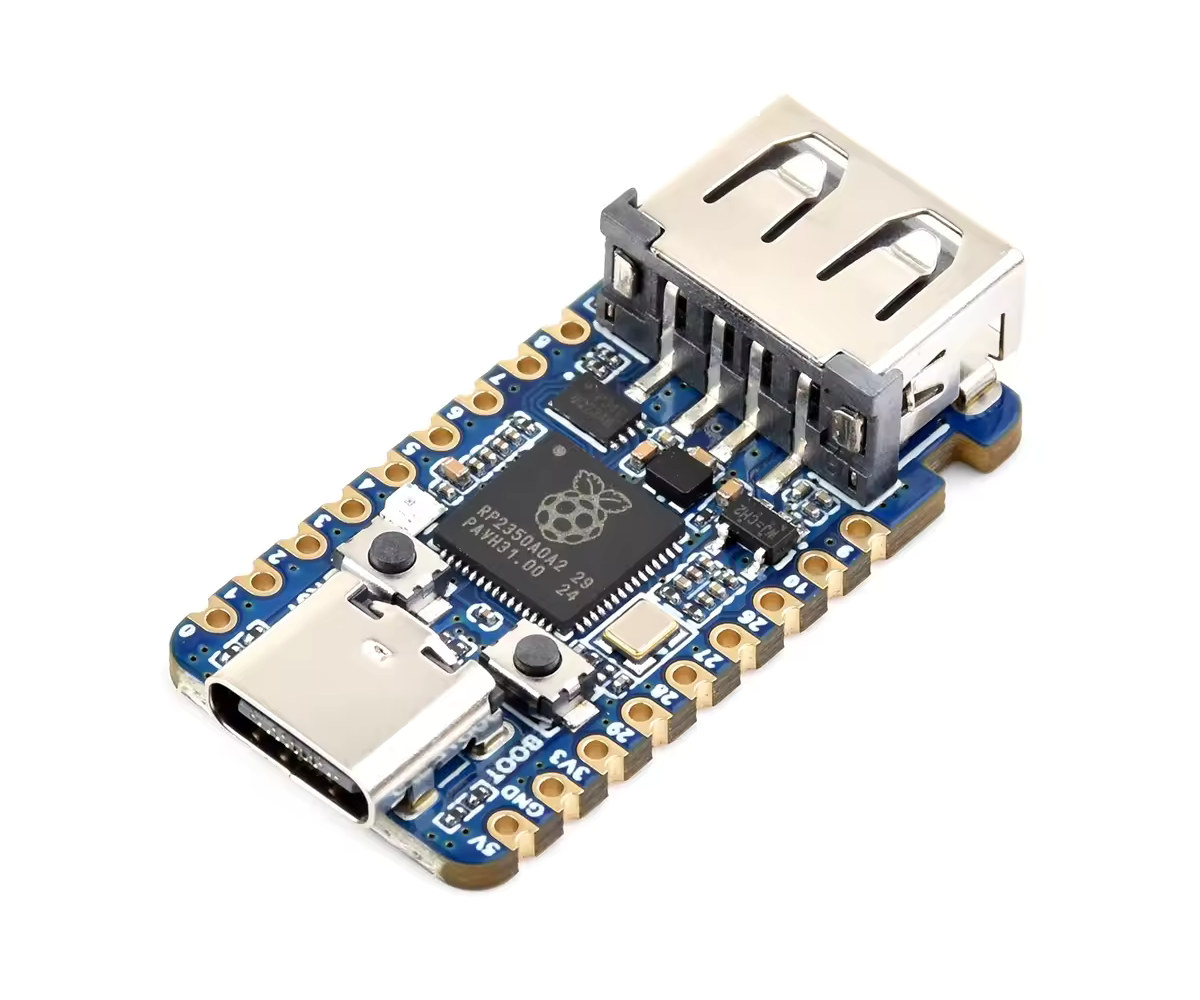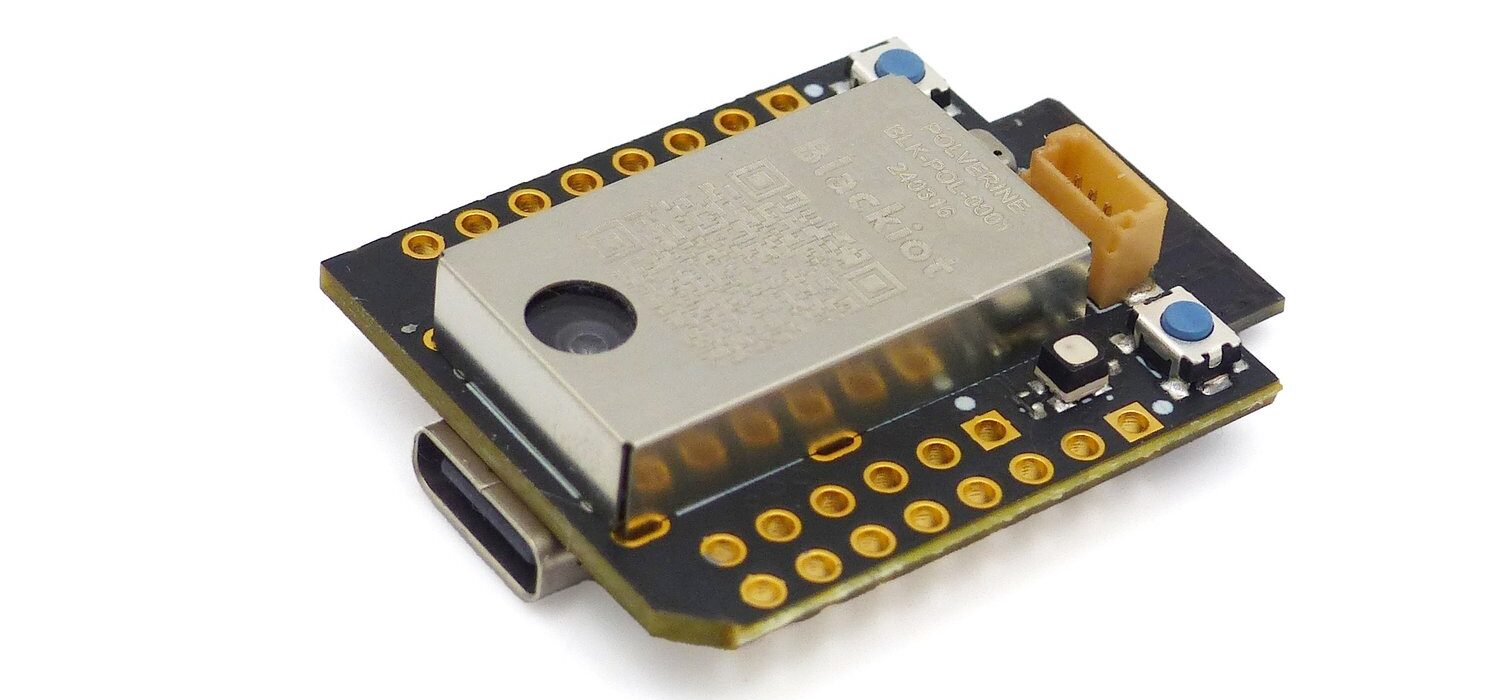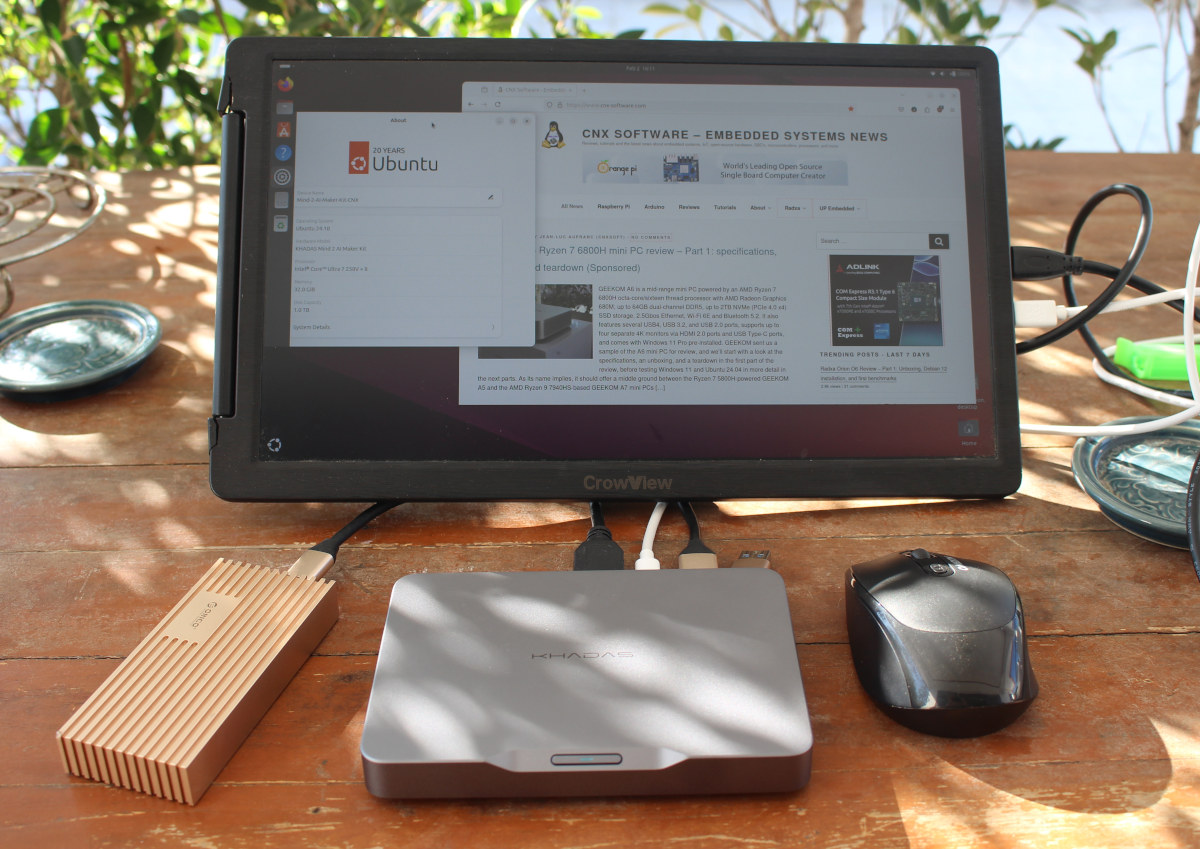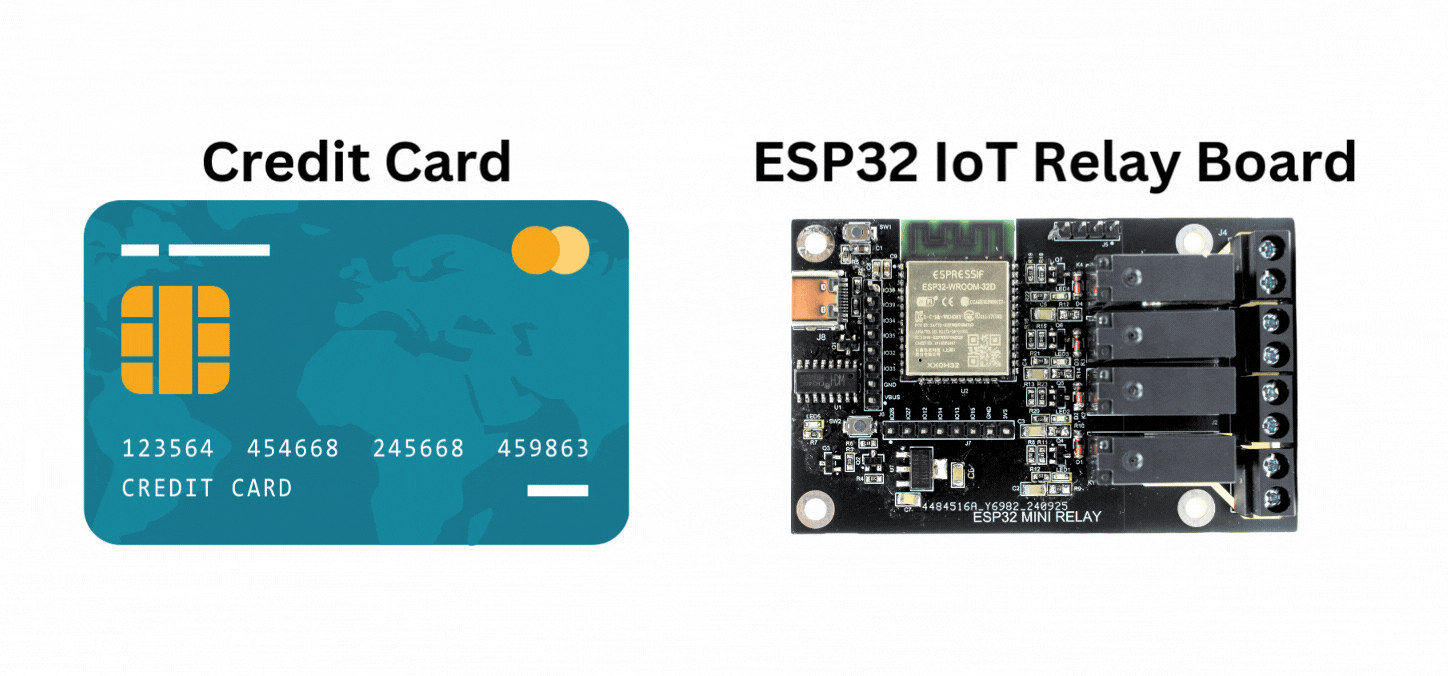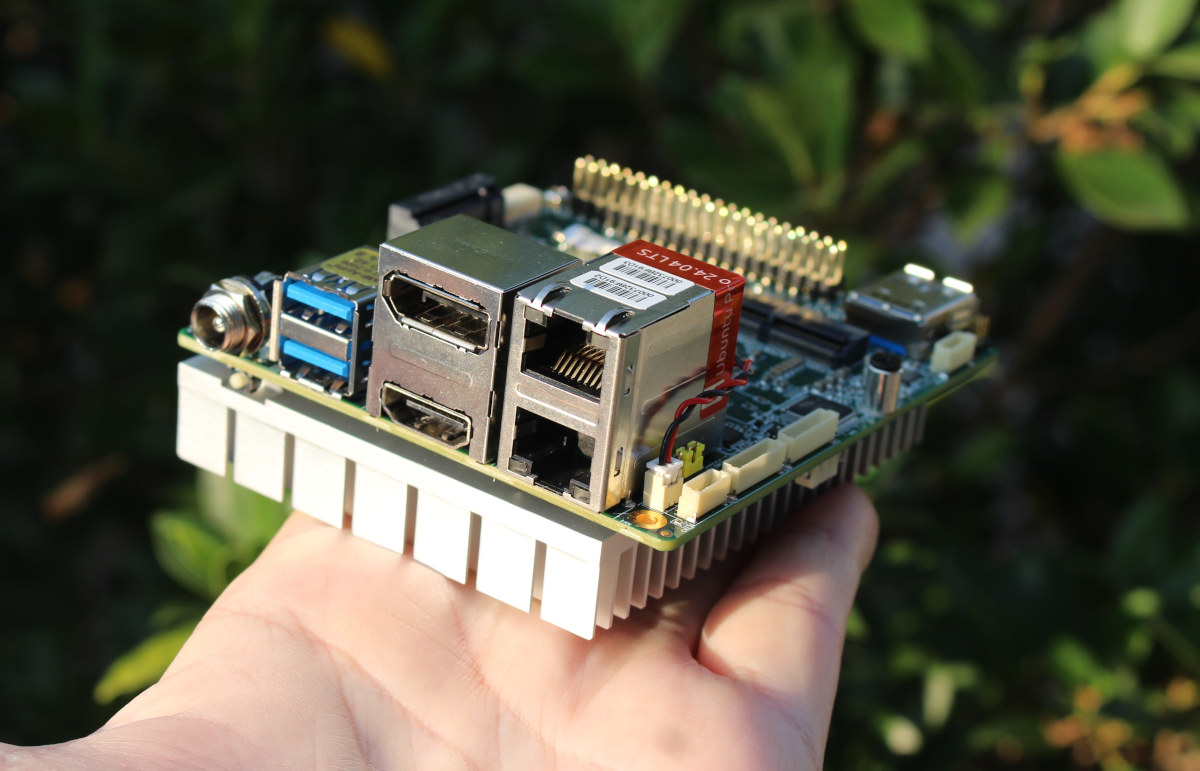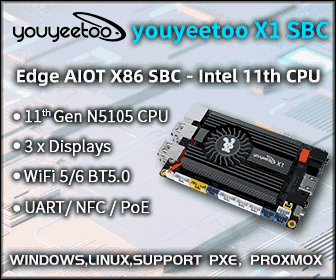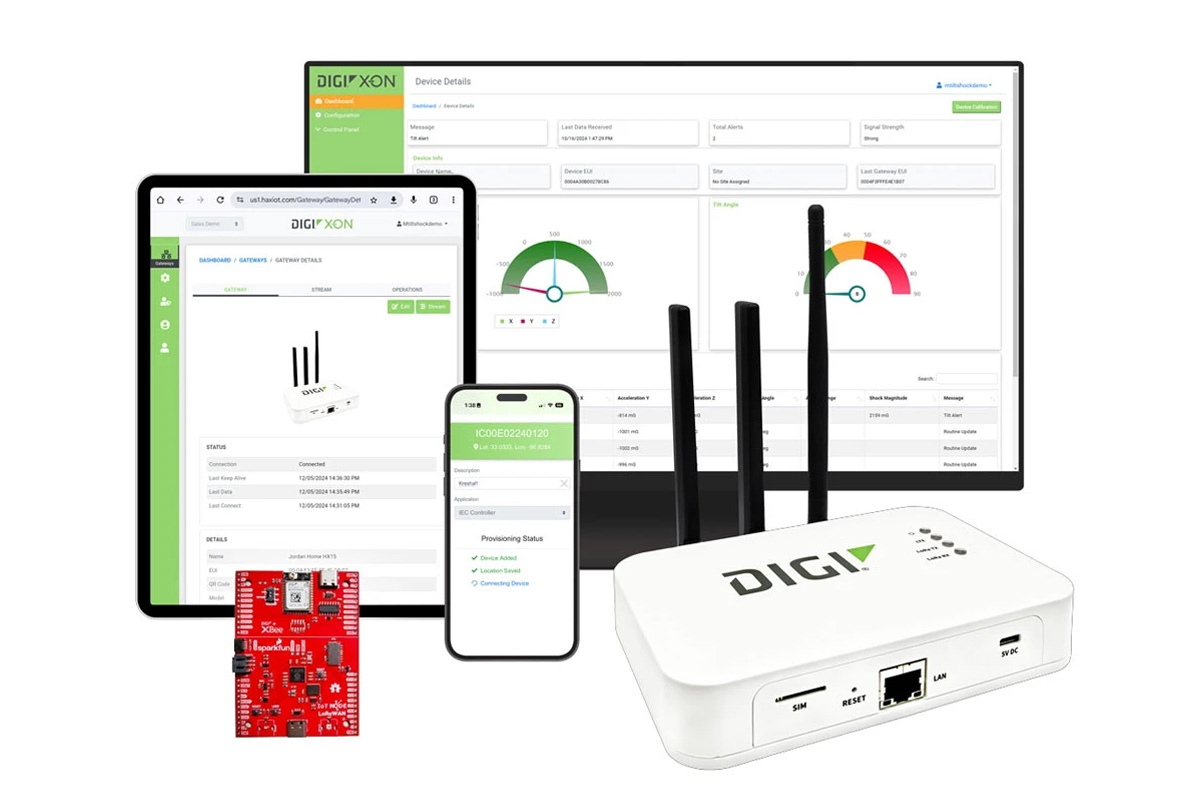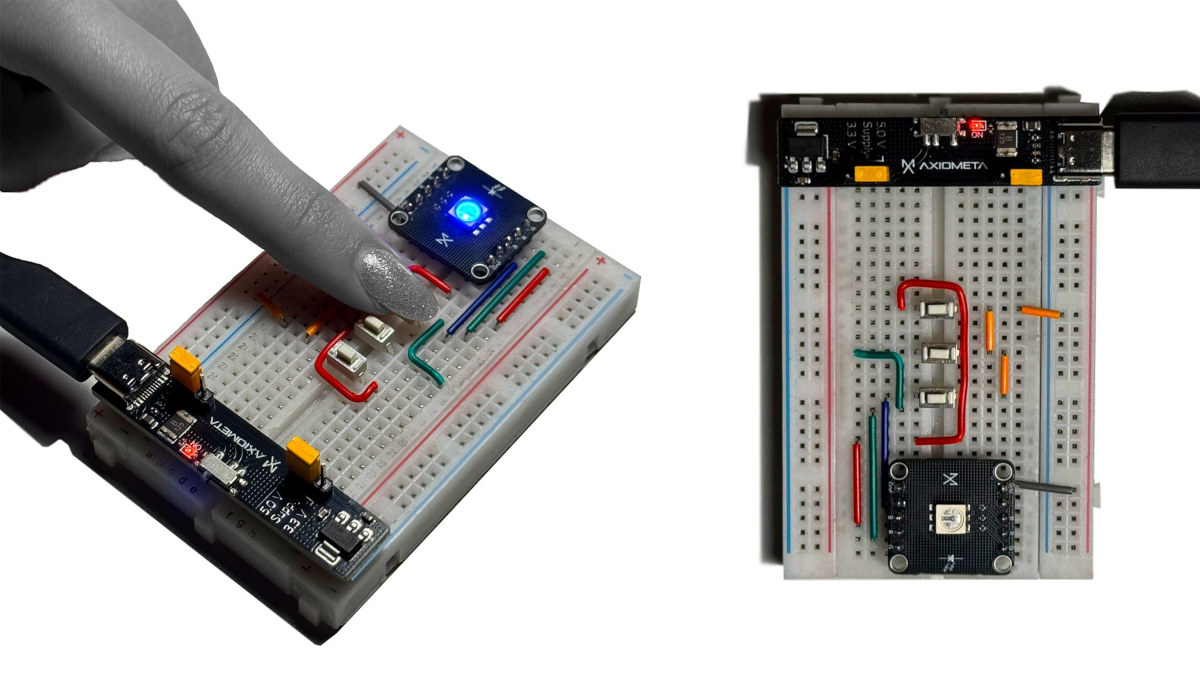AAEON GENE-MTH6 Intel Meteor Lake-powered 3.5-inch “Subcompact” SBC takes up to 96GB DDR5, offers an ERP-compliant 9V-36V wide power input range, and includes an unusual PCIe Gen4 x4 FPC connector to add an M.2 expansion module, or other custom modules. The board also features two 2.5GbE and one GbE port, supports WiFi 6 and 5G via M.2 sockets, a SATA port and an M.2 socket for storage expansion, four display interfaces, a few USB ports, four internal COM ports for RS232 and/or RS485, and more. It is offered with either 15W U-Series (Intel Core Ultra 5 125U / Core Ultra 7 155U) or 28W H-series (Intel Core Ultra 5 125H / Core Ultra 7 155H) processors. AAEON GENE-MTH6 specifications: Meteor Lake SoC (one or the other) Intel Core Ultra 7 155H 16-core/22-thread processor up to 4.8 GHz with 24MB cache, Intel 8Xe LPG graphics @ 2.25 GHz, Intel AI Boost […]
RP2350-USB-A – A Raspberry Pi RP2350 board with an extra USB Type-A port using a PIO implementation
Waveshare RP2350-USB-A is a small Raspberry Pi RP2350 board with a USB-C port for power and programming and a USB-A port to use the board as a USB device or host through a programmable IO (PIO) implementation. The board also features an RGB LED and two GPIO headers, which could make it useful for controlling GPIO/I2C/UART/SPI-connected devices when connected to a USB keypad or similar input. Alternatively, it could emulate a keyboard, mouse, or other USB device when connected to a host. RP2350-USB-A specifications: SoC – Raspberry Pi RP2350A MCU CPU Dual-core Arm Cortex-M33 @150MHz with Arm Trustzone Dual-core 32-bit Hazard3 RISC-V @ 150MHz Up to two cores can be used at the same time Memory – 520KB SRAM Storage – 2MB SPI flash for firmware USB USB Type-A port connected to GPIO12, GPIO13, 5V, and GND USB 1.1 Type-C port for power and programming Expansion – 2x 9-pin 2.54mm […]
Polverine – A compact, mikroBUS-compatible environmental sensing platform with PM 2.5 and gas sensors (Crowdfunding)
Polverine is a mikroBUS-compatible environmental sensing platform featuring a BMV080 PM2.5 sensor and a BME690 gas sensor, plus an Espressif ESP32-S3-MINI-1 module to add Wi-Fi 4 and Bluetooth 5 connectivity. The onboard BMV080 sensor is described as the “world’s smallest PM2.5 sensor” at 4.2 x 3.5 x 3mm. The PM2.5 particulate matter sensor is complemented by the BME690 which measures temperature, humidity, and pressure, and detects volatile organic compounds (VOCs) for complete environmental monitoring. The board offers sufficient processing power for quick data handling, with wireless connectivity for easy integration into IoT systems and smart devices. Projected applications for the sensor platform include indoor air quality monitoring, smart homes, HVAC systems, industrial monitoring (gas leak and pollution monitoring), wearables for personal air quality tracking, and anomaly detection in emergency scenarios. We have seen other ESP32-based environmental sensor platforms such as the Sensy32 board, MoreSense MS-06, and AirGradient One, but the […]
Khadas Mind 2 AI Maker Kit Review – Part 3: Ubuntu 24.10 and the importance of power limits
I’ve already reviewed the Khadas Mind 2 AI Maker Kit with Windows 11 Home, and today, I’ll report my experience with Linux on the Intel Core Ultra 7 258V mini PC using Ubuntu 24.10 operating system. I would usually review systems with Ubuntu 24.04 LTS OS, but considering the Intel Core Ultra 7 258V SoC is so new, I installed Ubuntu 24.10 when I tested whether disabling VT-d (IOMMU) would improve Intel Arc GPU performance (it does to some extent), and it turns out it was a good decision because Ubuntu 24.04 requires lots of fixes and workarounds to work the Khadas Mind 2 AI Maker Kit, at least until Ubuntu 24.04.2 is released later this month with a more recent kernel. Khadas Mind 2 AI Maker Kit – Ubuntu 24.10 system information My Ubuntu 24.10 installed has both Linux 6.11 (default) and Linux 6.13 kernels, but I did most […]
Credit card-sized quad relay board runs Tasmota firmware on ESP32 module (Crowdfunding)
The “ESP32 IoT Relay Board” is a credit card-sized ESP32 board with four small 250VAC/30VDC 7A relays that runs Tasmota open-source firmware and supports Alexa & Google Assistant for voice control. There are so many ESP32-based relay boards on the market that I don’t usually feel the need to cover new ones, but Igor Mileshin’s ESP32 IoT Relay Board is smaller than most so I thought it might be interesting to some. The smallest quad-channel relay board I’ve seen so far is the one by Seeed Studio using an STM32 MCU and solid-state relays that measures just 60 x 40mm, but the relays only support up to 2A. ESP32 IoT Relay Board specifications: Wireless module – ESP32-WROOM-32D SoC – Espressif ESP32-D0WD dual-core Tensilica LX6 processor @ 240 MHz Storage – 32Mbit SPI flash Connectivity – Wi-Fi 802.11 b/g/n up to 150 Mbps, Bluetooth 4.2/5.x LE Relays 4x “industrial-grade” relays supporting […]
UP Squared 7100 fanless SBC Review – Part 1: Unboxing and first boot to Ubuntu Pro 24.04
AAEON sent me a sample of the UP Squared 7100 fanless industrial SBC for review. The board is powered by an Intel N97 or N100 Alder Lake-N SoC (Amston Lake processors will be offered soon), and is equipped with up to 16GB LPDDR5 RAM and 128GB eMMC flash, plus two M.2 sockets for wireless and storage expansion. You’ll find the full specifications in our earlier article. I’ll start the review with an unboxing to check out the hardware, before booting it to Ubuntu Pro 24.04 LTS to check out some basic system information. In a few weeks, I’ll report my experience after in-depth testing in Ubuntu in the second part of the review which will include features testing from gigabit Ethernet to GPIO, some benchmarks, and power consumption measurements. UP Squared 7100 unboxing I received the UP Squared 7100 board in a retail package that reads “Are you UP for […]
SparkFun Digi X-ON LoRaWAN development kit combines Digi HX15 gateway with RP2350 IoT node and environmental sensors module
SparkFun has recently released the Digi X-ON LoRaWAN development kit an all-in-one IoT development kit designed to simplify the setup and deployment of LoRa-based IoT systems. It includes the Digi HX15 Gateway, SparkFun IoT Node for LoRaWAN, and the ENS160/BME280 environmental sensor, enabling rapid prototyping and connectivity with the help of the Digi X-ON cloud platform. The SparkFun IoT Node is built around the Raspberry Pi RP2350 microcontroller, which features 16MB flash, 8MB PSRAM, multiple GPIOs, LiPo battery support, microSD storage, and USB-C connectivity. It also integrates the Digi XBee LR module for long-range LoRaWAN communication with pre-activated cloud connectivity. With an onboard Qwiic connector and Arduino support, this development kit is ideal for applications like industrial monitoring, environmental sensing, smart agriculture, remote data collection, and more. Digi HX15 gateway specifications Microprocessor – STMicro STM32MP157C MPU with dual-core Cortex A7 @ 650 MHz, Cortex-M4 @ 209 MHz with FPU/MPU, 3D […]
Brodboost-C is a USB Type-C breadboard power supply board with adjustable 3.3V or 5V voltage (Crowdfunding)
Axiometa BrodBoost-C is a USB Type-C breadboard power supply with a simple design that powers both rails of a breadboard with voltage adjustable between 3.3V or 5V. It also includes an on/off switch, an LED indicator, and built-in fuse protection. BrodBoost-C specifications: Output voltage – Adjustable: 3.3V or 5V DC Maximum current – 1A Ports USB Type-C connector for power input 2x 2×5 2.54 mm breadboard-compatible power and ground rails 2x 3-pin 2.54 mm selection headers with 2x jumper caps Safety – Short circuit protection Input filtering – Ferrite bead for noise suppression and decoupling capacitors Misc – Red Power LED, ON/OFF power switch Voltage regulation: 5.0 V selected by USB CC Pins (5.1 k resistors) 3.3 V step-down regulation via AMS1117-3.3 Dimensions – 54 x 19.5 x 11.4 mm Weight – About 20 grams We’ve written about several breadboard power supplies over the years including the Toaster board with […]


